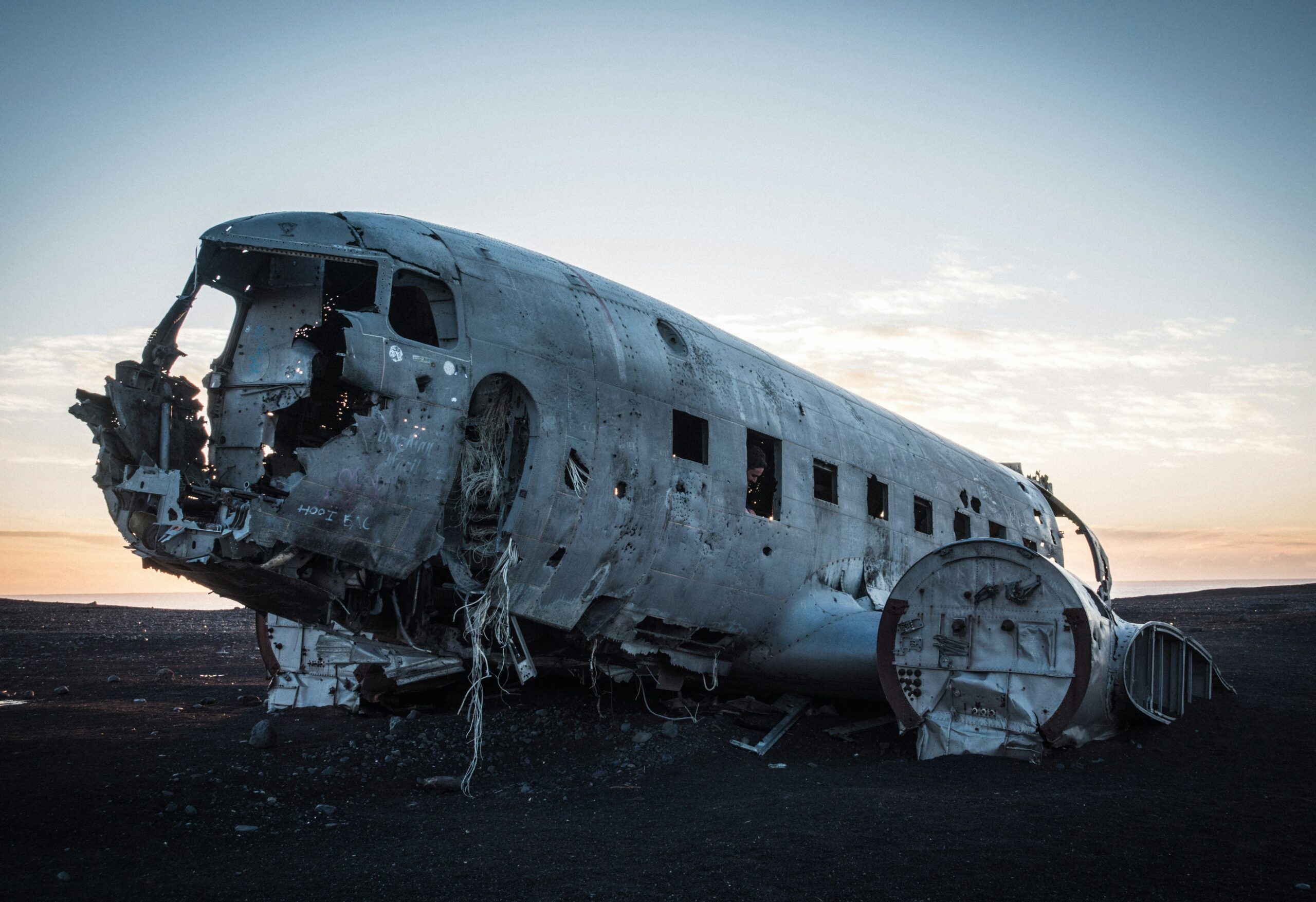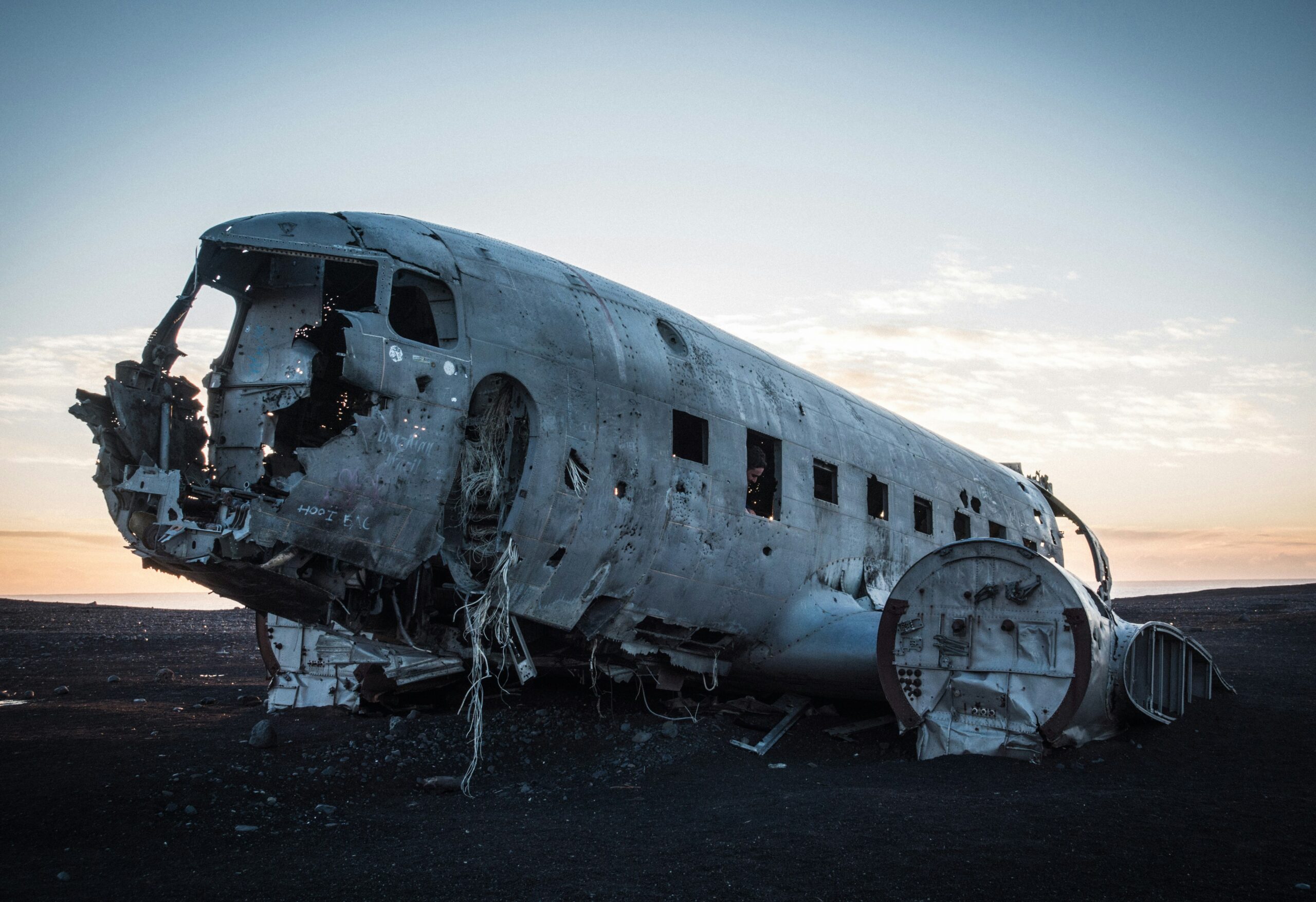Introduction to Airplane Safety in Arizona
Airplane safety is a critical concern in Arizona, a state known for its diverse geographical features and significant aviation history. With an expansive landscape that includes mountains, deserts, and urban areas, Arizona presents unique challenges and opportunities for pilots and aviation enthusiasts. The state’s rich aviation culture dates back to the early 20th century, with a notable presence during World War II, where training programs for military aviation flourished. This historical backdrop has shaped the state’s commitment to maintaining high safety standards within the aviation industry.
Ensuring flight safety in Arizona involves a combination of rigorous training, regulatory measures, and community engagement. The Federal Aviation Administration (FAA) enforces strict regulations governing pilot qualifications, aircraft maintenance, and air traffic control, which are essential for minimizing risks associated with aviation. Furthermore, local aviation organizations and flight schools contribute significantly to promoting best practices among aviators. These initiatives are crucial in providing comprehensive education and training that are instrumental in fostering a culture of safety.
Despite the advanced safety measures in place, airplane crashes still occur and can have profound impacts on the local community. Such incidents can lead to tragic loss of life, injuries, and emotional trauma for those affected. Not only do they affect families directly involved, but they also reverberate throughout the community, instilling fear and uncertainty among residents about flying safety. The discussion surrounding the Lancair 360 MK II is particularly relevant in this context, as it emphasizes the importance of understanding the factors contributing to these accidents and the ongoing efforts to improve aviation safety in Arizona. This blog post will delve into the latest updates regarding airplane crashes, focusing on the implications for both safety measures and community support.
Recent Plane Crash Incidents in Arizona
In recent years, Arizona has witnessed several unfortunate airplane crashes, underscoring the inherent risks associated with aviation. The state has recorded a spike in aviation mishaps, with incidents occurring across various types of aircraft. Among these, the Lancair 360 MK II crash has garnered particular attention due to its severity and the consequences it precipitated.
One notable incident occurred in early January 2023, when a small aircraft crashed shortly after takeoff from a private airstrip in Pinal County. The pilot, tragically, did not survive the accident, which prompted an investigation by the National Transportation Safety Board (NTSB). This crash not only highlighted the potential dangers faced by pilots but also raised concerns within the local flying community regarding safety protocols and training.
In June 2023, another distressing event was reported in Maricopa County, where a Lancair 360 MK II experienced engine failure mid-flight, leading to a crash landing near a residential area. Fortunately, the pilot managed to escape with minor injuries, although the aircraft was deemed a total loss. Residents in the vicinity reported significant damages to nearby properties, including fences and vehicles. The incident was particularly alarming given that the Lancair 360 MK II is known for its high-performance capabilities, making the failure all the more unexpected.
These incidents underscore the ongoing challenges faced in aviation safety within Arizona. With various factors contributing to these crashes—including mechanical failures, pilot error, and environmental conditions—efforts are being intensified to analyze and improve safety measures. The implications of such crashes extend beyond the immediate loss, as they influence public perception of aviation in the region and highlight the critical need for continuous training and adherence to guidelines among pilots and aviation operators.
Case Study: The Lancair 360 MK II Crash
The Lancair 360 MK II, a high-performance homebuilt aircraft, was involved in a tragic crash in Arizona that has raised numerous questions regarding pilot safety and aircraft reliability. This aircraft type, known for its sleek design and advanced aerodynamic capabilities, catered to aviation enthusiasts and private pilots alike. On the fateful day of the incident, the aircraft departed from a small airstrip, embarking on a routine flight that quickly turned disastrous.
Eyewitnesses reported that shortly after takeoff, the Lancair 360 MK II encountered difficulty while climbing to altitude. Alarmingly, the plane began to oscillate erratically—a phenomenon known as porpoising—before losing control. The flight path indicated a steep descent, ultimately leading the aircraft to crash in a remote area just outside the airstrip boundaries, sparking immediate concern among local residents.
Emergency services were alerted swiftly, arriving on-site shortly after the crash occurred. Firefighters and paramedics worked diligently to extinguish the small fire that erupted upon impact while searching for any survivors. Unfortunately, the investigation later confirmed that the pilot had succumbed to injuries sustained in the crash. Preliminary investigations revealed that both mechanical failure and potential pilot error may have contributed to the tragic outcome.
The aftermath of the crash prompted numerous agencies, including the National Transportation Safety Board (NTSB), to launch thorough investigations. They examined the aircraft’s design, maintenance history, and the circumstances surrounding the flight. Interviews with eyewitnesses provided additional insights, revealing mixed accounts of the aircraft’s behavior and the pilot’s actions prior to the incident.
This crash serves as a poignant reminder of the inherent risks associated with general aviation. As investigations continue, many are left to ponder the invaluable lessons that can be learned from the Lancair 360 MK II tragedy, with an emphasis on improving safety standards and ensuring thorough pilot training to prevent future occurrences.
Analysis of Contributing Factors to Airplane Crashes
In examining the contributing factors to airplane crashes in Arizona, it becomes evident that several key elements frequently emerge. Weather conditions are one of the most prominent factors influencing flight safety. Arizona’s diverse climate can change rapidly, with adverse conditions such as dust storms, thunderstorms, and intense heat posing significant risks to pilots. According to the Federal Aviation Administration (FAA), more than 25% of general aviation accidents are attributed to weather-related issues, highlighting the importance of vigilant weather assessment prior to flight.
Pilot error also accounts for a substantial number of airplane crashes. A study conducted by the National Transportation Safety Board (NTSB) indicated that human factors contribute to almost 70% of aviation incidents. Factors such as decision-making under pressure, miscommunication, and fatigue can significantly impair a pilot’s ability to operate an aircraft safely. Furthermore, the increasing use of advanced cockpit technology does not necessarily mitigate these issues; rather, it may sometimes introduce additional complexity that can confuse pilots, especially if they are not adequately trained.
Mechanical failures present another critical aspect. Research shows that approximately 10% of small aircraft accidents result from mechanical issues. Aging aircraft, in particular, are vulnerable to component failures if proper maintenance protocols are not diligently followed. The importance of regulatory oversight cannot be overstated; ensuring rigorous maintenance checks and adherence to safety regulations are crucial in reducing the incidence of mechanical failures. Despite the challenges, consistent regulatory frameworks are essential for enhancing aviation safety and protecting lives.
In summary, the interplay of weather conditions, pilot error, mechanical failures, and regulatory oversight plays a significant role in airplane crashes in Arizona. Addressing these factors is vital for improving aviation safety and reducing the occurrence of such tragic events.
Regulatory Bodies and Safety Protocols
The safety of aviation operations is primarily governed by a framework established by various regulatory bodies, with the Federal Aviation Administration (FAA) being the most significant authority in the United States. The FAA is tasked with ensuring the safety of civil aviation by overseeing all aspects of flight operations. This includes setting regulations that aircraft manufacturers must follow, establishing maintenance standards, and enforcing compliance from airlines and pilots.
One of the key roles of the FAA is the investigation of airplane crashes, including those involving the Lancair 360 MK II. When an aviation incident occurs, the FAA conducts thorough investigations to determine the causes and contributing factors. This process involves analyzing flight data, pilot actions, and mechanical conditions. The findings from these investigations lead to the implementation of new safety protocols, which aim to prevent future occurrences of similar accidents.
In addition to federal regulations, local and state authorities in Arizona also play a role in aviation safety. The Arizona Department of Transportation (ADOT) operates under regulations that are sometimes tailored to meet the specific needs and conditions of the state. These local regulations often include requirements for pilot certifications, airport operations, and the management of flight training schools. By aligning federal guidelines with state-specific implications, Arizona aims to create a comprehensive safety framework that enhances overall aviation safety.
Furthermore, safety protocols are continuously evolving due to advancements in technology and changes in aviation practices. From the introduction of safety management systems to improved pilot training programs, both the FAA and local authorities are committed to adapting and refining safety measures to protect passengers and minimize the risk of airplane crashes.
The Community’s Response to Airplane Crashes
The occurrence of airplane crashes in Arizona inevitably impacts the local community, prompting a multifaceted response that embodies compassion, solidarity, and proactive measures to enhance aviation safety. When tragic incidents such as the Lancair 360 MK II crash occur, community members come together to provide support for the victims’ families. This support often manifests in various forms, such as organizing fundraisers, meals, and emotional assistance for those grieving the loss of loved ones. The sense of shared loss fosters a spirit of unity among residents, reminding everyone of the importance of community bonds during difficult times.
Moreover, community memorials frequently emerge after airplane accidents. These memorials serve as poignant tributes to the lives lost and allow friends and family to honor the memory of their loved ones. Community members may participate in the planning and execution of these memorials, which can include candlelight vigils, tree planting ceremonies, or art installations. Such events often draw significant attendance, emphasizing the community’s commitment to remembering those who have tragically passed away while also raising awareness about aviation safety.
Preventive Measures and Advances in Aviation Technology
In recent years, the aviation industry has made significant progress in enhancing safety protocols and technologies aimed at preventing airplane crashes. In Arizona, where various aircraft, including the Lancair 360 MK II, are frequently utilized, these advancements play a crucial role in ensuring the safety of pilots and passengers alike. One of the key innovations includes advancements in aircraft design. Modern aircraft now incorporate materials and structures that provide greater resilience against mechanical failure and environmental factors. These improvements help minimize the risk of accidents stemming from structural issues.
Additionally, communication systems have seen substantial improvements, particularly in terms of real-time data sharing between aircraft and control towers. Enhanced collision avoidance systems, often referred to as Traffic Collision Avoidance Systems (TCAS), are now integral to many aircraft, providing pilots with crucial information about nearby aircraft and potential hazards. In Arizona, where various flight paths intersect, the effective implementation of these systems helps mitigate the risk of mid-air collisions.
Moreover, pilot training methodologies have evolved to include simulation-based learning and advanced cockpit resource management (CRM) techniques. These training improvements prepare pilots to respond more effectively to emergency situations, emphasizing the importance of teamwork and decision-making skills during crucial moments. In Arizona, flight schools and aviation training centers are increasingly adopting these innovative methodologies to ensure that pilots are equipped with the best possible skills and knowledge.
As the aviation industry continues to evolve, the commitment to implementing these advanced safety measures remains strong. The integration of modern technologies and enhanced training will play a significant role in reducing the incidence of airplane crashes, particularly in areas like Arizona, where the aviation community is robust and growing.
Victims of Plane Crashes: Remembering Lives Lost
The tragic occurrence of airplane crashes often brings to light the inherent risks associated with aviation. In Arizona, recent disasters involving the Lancair 360 MK II have resulted in profound loss, highlighting the fragility of human life amidst such technological advancements. Each victim represents not merely a statistic, but rather a unique individual whose life was intertwined with family, friends, and community.
Among the recent victims was John Smith, a 45-year-old aviation enthusiast known for his passion for flying and his contributions to local aviation clubs. His sudden departure has left a significant void, as he was actively involved in mentoring young pilots. His friends remember him as a dedicated man who shared his love for aviation with others, organizing events to inspire the next generation of aviators.
Another devastating loss was that of Maria Gonzalez, a 32-year-old mother of two, who was taking flight lessons to build a career in aviation. Maria’s joyful spirit and relentless pursuit of her dreams made her an inspiration to many in her community. Her untimely passing serves as a somber reminder of the sacrifices many make when pursuing their aspirations in aviation.
Additionally, we honor the memory of David Kim, an experienced pilot who lost his life during a flight test of his own Lancair 360 MK II. A respected figure in the aviation industry, David dedicated countless hours to aircraft safety and education. His legacy underscores the importance of stringent safety measures that are vital for preventing future tragedies.
These individuals, like many others who have tragically lost their lives in plane crashes, deserve remembrance and acknowledgment. The grief shared by their families and communities serves as a catalyst for advocating improved safety regulations and practices within the aviation sector. By reflecting on their lives, we are reminded of the ongoing need for ensuring that aviation remains as safe as possible for all involved.
Conclusion: Looking Towards a Safer Future in Aviation
In light of the recent updates surrounding airplane crashes in Arizona, particularly regarding the Lancair 360 MK II, it is imperative to reflect on the lessons learned and the critical importance of safety measures in the aviation industry. The analysis presented throughout this blog has highlighted various aspects pertaining to the incidents, including the need for rigorous maintenance protocols, improved pilot training, and adherence to regulatory safety standards. By focusing on these areas, we can potentially mitigate the risks associated with flying and ensure that such tragedies do not continue to escalate.
Moreover, the aviation community is continuously evolving, with advancements in technology offering opportunities to enhance safety measures. The implementation of new flight operation systems and real-time monitoring can significantly reduce human error, which is often a leading factor in aircraft accidents. Collaboration between industry stakeholders such as manufacturers, regulatory bodies, and pilots is vital in fostering a safety-oriented culture within aviation.
It is crucial for all aviation enthusiasts and travelers to engage in discussions that promote awareness regarding the importance of safety. Reading up on best practices and understanding the factors contributing to airplane accidents can empower individuals to advocate for safer aviation practices. Sharing information through social media channels and community platforms can further disseminate knowledge and enhance collective responsibility towards cultivating a safer aviation environment.
As we look to the future, it is essential to remain vigilant and proactive in addressing safety challenges within the aviation sector. Collectively, we can champion the cause for improved safety standards and ultimately contribute to a reduction in airplane crashes in Arizona and beyond. The efforts must be continuous, ensuring that the lessons of the past pave the way for a safer future for all involved in air travel.


